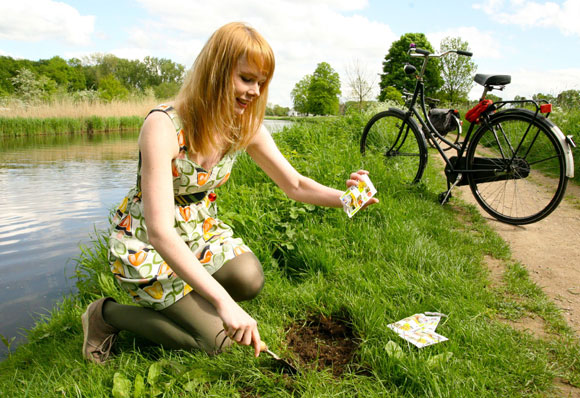It’s Good news if you’re planning a beach holiday in the UK or Europe this summer as 92.1 % of bathing waters in the European Union now meet the minimum water quality standards set by the Bathing Water Directive. Included in this is the Serpentine Lake in London, host to several Olympics events, including the Open Water Marathon Swim and the swimming section of the triathlon.
The European Environment Agency (EEA) and the European Commission have just published their annual Bathing Water Report of, which describes water quality in more than 22,000 bathing sites at beaches, rivers and lakes across Europe last year.
Janez Poto_nik, Environment Commissioner, said: “I am pleased to note that the quality of Europe’s bathing waters generally remains high, and has improved since last year. A clear majority of Europeans are concerned about water quality issues, and want more information on this. We must therefore continue our work to ensure our waters are appropriate for all legitimate uses – from bathing to drinking – and that the overall aquatic ecosystem is in good health.”
Professor Jacqueline McGlade, Executive Director of the European Environment Agency, said: “The quality of water at beaches and other bathing spots is one of the most important environmental concerns of European citizens. But in several countries there is still a problem with pollution from agriculture and sewage, so we need to see more efforts to ensure safe and clean water for the public.”
The report discovered that 77.1 % of sites had excellent quality, i.e. complying with the most stringent guide values, an improvement of 3.5 percentage points on last year’s data. Some 93.1 % of coastal bathing waters were classified as ‘sufficient’, or complying with the less stringent mandatory values – a 1 % increase. Less than 2 % of bathing waters were non-compliant.
Cyprus, Croatia, Malta and Greece had excellent reports on their bathing water sites, all with more than 90 % of bathing water sites meeting the most stringent guide values (excellent quality), and the remainder complying with the mandatory values. At the opposite end of the scale, the Netherlands, Bulgaria, Latvia, Luxemburg and Belgium had relatively low proportions of sites meeting the strict guide values, especially as regards inland waters.
Water quality at Europe’s most popular summer destinations was generally good – with more than 90 % of bathing water sites meeting the mandatory values. Spain, Italy and Portugal had more than 80 % of sites with excellent water quality.
The overall quality of bathing waters in the EU has markedly improved since 1990. The number of coastal bathing waters not complying with the Bathing Water Directive’s, standards for which were set in the 2006, fell from 9.2 % of sites in 1990 to 1.5 % in 2011. The number of inland bathing areas not complying with mandatory values decreased from 11.9 % in 1990 to 2.4 % in 2011, which is among the lowest percentages to date.
Laboratories analysed levels of certain types of bacteria, including intestinal enterococci and Escherichia coli bacteria, which may indicate the presence of pollution, mainly from sewage or livestock waste. Sites are classified as compliant with mandatory values, compliant with the more stringent guidelines, or non-compliant.
If you are holidaying in the UK or in Europe and you want to check out the water quality, you can by visiting the Water Information System for Europe (WISE) site. The site allows users to download data and check interactive maps. It also has the ability for people to report the state of their local water using the Eye on Earth website.

